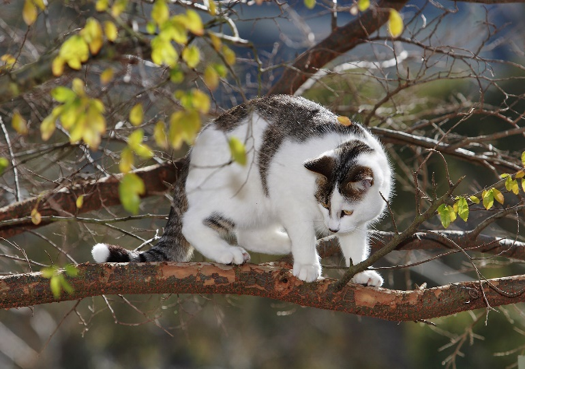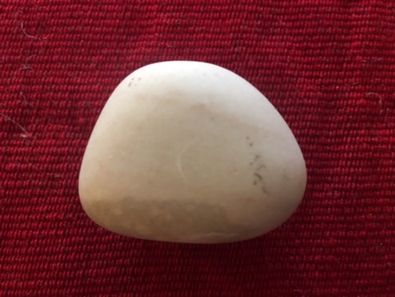Feeling Fear and Doing It Anyway
Surviving a coercively controlling relationship feels like a balancing act, but one in which you have no control over when and how you’ll get nudged off the branch you’re living on. You stay vigilant for danger signs and cope the best you can.

You may reach a decision that life can’t go on as it has. If so, there are many paths from which to choose, a few of which are:
- Reading books,
- Talking to a domestic violence advocate or a therapist,
- Telling friends or family,
- Telling partners to get help or we’ll leave,
- Consulting with an attorney about options,
- Calling the police,
- Making a plan to leave safely, or
- Leaving.
All these steps are choices for change. Many people only see leaving as a sign that survivors are resisting coercive control, rather than recognizing all the precursors on the continuum of change. Each relationship is different, and you know best how far and fast to go. When leaving becomes the only choice, it can present additional danger, so needs to be planned carefully.
Starting down a new path is frightening, no matter what it is. You don’t know what you’ll learn. You can’t control partners’ responses. You don’t know how professionals will see you. You’re afraid of losing your careful balance. You’re terrified you won’t be okay, that failure awaits.
I counsel everyone who is embarking on something new to expect feeling fearful. It usually feels like jumping off a cliff. All the insecurities we have (and we all have them) jump out to convince us we can’t make it. Do not take it as a sign you’re doing the wrong thing. I like the Buddhist term “monkey mind” that describes our automatic fears. It’s important to be able to differentiate these from the truth, the inner voice we need to listen to and trust. Monkey mind pops up with any new endeavor, whether it’s ending a relationship, starting a job, going to school, marrying, having a baby, or writing a book.
Which brings me to a personal experience. I recently was offered a publishing contract. I’ve been writing a self-help book for intimate partner violence survivors for several years. The voice of fear and doubt became familiar on this journey. Now and then, I’ve checked in with myself and asked, “Is this really something you are called to do?” The answer has always been “yes,” and I’ve trusted my inner voice and plowed ahead.
Now that it’s becoming reality, of course the fears popped up in full force. I’ve learned to notice them but not believe in them or give them power over me. The author Eckart Tolle says,
“What a liberation to realize that the “voice in my head” is not who I am. Who am I then? The one who sees that.”[i]
The automatic fears and doubts we experience are what he means by “voice in my head.” The inner voice I’m referring to is who we really are, not the learned fears and insecurities that I call “instilled fears.” These fears begin when we’re put down, doubted, ridiculed, and forced to submit. We absorb how we’re treated and begin to see ourselves as weak, stupid, incapable, or any number of other lies.
Whether we access who we are through a spiritual or secular practice, it is vital that we learn to do that. Traumatic experiences serve to divorce us from ourselves. Healing involves regaining that sense of self. What we think, feel, want, need, dream of, and want to manifest in our lives. Sometimes it means finding ourselves for the first time. We all need support, so seek out those who will encourage and help us.
Too often, we are discouraged from listening to ourselves. Intuition has been downplayed in our culture to our detriment, as Gavin deBecker in The Gift of Fear[ii] indicates. The English language can be very confusing with different meanings for words, so let me clarify his use of fear. He speaks in his book of the rational and intuitive fears that we’ve often been taught to ignore. The fear that comes from paying attention to something not being right. He’s not talking about the instilled fears I described above.
Learning to trust yourself involves listening to and following your inner voice. That includes listening to your perceptions, which means you’ll pay attention to rational fear. The good news is the more you do this, the more you will trust it. But starting out is scary. We can’t know exactly what’s going to happen. Just don’t believe in the automatic, instilled fears and use the rational fear as an impetus for safety planning. Embrace a new identity as a person who can observe both kinds of fear but not allow them to control you.
My spiritual community engages in a white stone ceremony every January. It harkens back to Roman times when people were given white stones to prove they were citizens. When someone was imprisoned, they took away the stone. When the prisoner was released, they were given the white stone again. Our ceremony also involves listening for a new name, some quality or vision that we want to manifest in the new year.
We each come from a bondage of fake limitations, old beliefs, insecurities, and lies. I invite you to find a stone that signifies being released from these. And to listen to what your new name is for the year.

I’ve chosen mine. One that encourages me on my journey of finishing the manuscript for my book by September 1st so it will be published March 11, 2021. The tentative title is Coercive Control: Trampling Your Life and Our Culture.
Let us congratulate ourselves on all the ways we learn to feel fear and stay loyal to our inner voices anyway.
[i] Tolle, Eckhart, A New Earth: Awakening to Your Life’s Purpose, New York: Penguin Books, 2005, 2016.
[ii] deBecker, Gavin, The Gift of Fear: And Other Survival Signals that Protect Us From Violence. New York: Dell Publishing, 1997.

